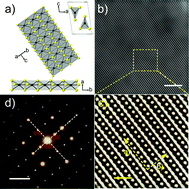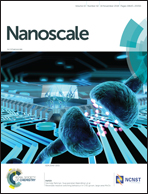Unique features of the generation–recombination noise in quasi-one-dimensional van der Waals nanoribbons†
Abstract
We describe the low-frequency current fluctuations, i.e. electronic noise, in quasi-one-dimensional ZrTe3 van der Waals nanoribbons, which have recently attracted attention owing to their extraordinary high current carrying capacity. Whereas the low-frequency noise spectral density, SI/I2, reveals 1/f behavior near room temperature, it is dominated by the Lorentzian bulges of the generation–recombination noise at low temperatures (I is the current and f is the frequency). Unexpectedly, the corner frequency of the observed Lorentzian peaks shows strong sensitivity to the applied source–drain bias. This dependence on electric field can be explained by the Frenkel–Poole effect in the scenario where the voltage drop happens predominantly on the defects, which block the quasi-1D conduction channels. We also have found that the activation energy of the characteristic frequencies of the G–R noise in quasi-1D ZrTe3 is defined primarily by the temperature dependence of the capture cross-section of the defects rather than by their energy position. These results are important for the application of quasi-1D van der Waals materials in ultimately downscaled electronics.

- This article is part of the themed collection: 2018 Nanoscale HOT Article Collection


 Please wait while we load your content...
Please wait while we load your content...
